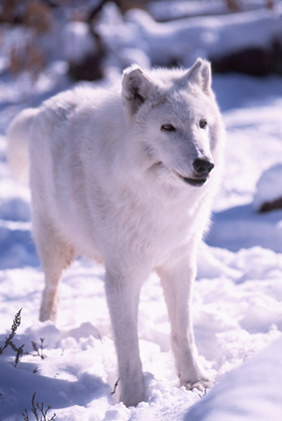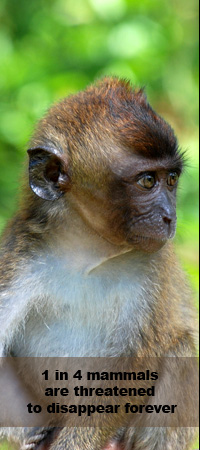|
At least three characteristics are shared by the mammals and are not found in other animals. These characteristics include the hair, middle ear bones, and the production of milk.
Hair
Because is not preserved well, we can only speculate when hair evolved. Pits in the fossilized rostrum (extension of the snout) of some therapsids indicate indirectly that they had vibrissae (long, stiff whisker hairs found on the upper lip of some mammals important for tactile sensing).
The earliest mammals and their predecessors were small and probably endothermic (generating heat internally by burning food). With a high surface area to mass ratio (because of their small size) and no good covering of insulation, they would have lost too much heat to exist. It is therefore likely that these animals had hair. Yet, how could hair for tactile sensing suddenly have evolved to form a pelage (fur covering the body) which is key for effective insulation?
It surely would not have happened over night. Instead, scientists theorize that hair probably evolved about 250 million years ago as tactile outgrowths between the scales of some ancestral therapsid and that hair only later took on the function of insulation. These early tactile outgrowths between the scales of therapsids were low-tech versions of today’s vibrissae.
Most mammals today rely heavily on their vibrissae since they are either crepuscular (twilight active), nocturnal (night active), fossorial (dwell underground), or aquatic living much of their lives in the dark. The following examples show how critical their wiskers are to their survival.
The chinchillas (Chinchilla lanigera), which live in the Andes Mountains, have whiskers that extend for at least a third of their body length. Vibrissae of this length are helpful when a small animal is in the water. Swimming rats extend their whiskers sideways to stay balanced in turbulent water. In the water, these organs can mean the difference between life and death. Observations have shown that rats drowned after their vibrissae had been removed because the animals were unable to keep their noses above the waterline.
Blind humans swing a white cane to navigate. Similarly, rodents use the same technique when they whisk their vibrissae across objects in the environment. Each whisker may hit the same object several times but in slightly different places. This allows the animal to draw a clearer picture with each pass.
While hunting, cats hold the whiskers out to the side in order to detect the faintest drafts of stirred up prey; and when cats pounce, they pull their whiskers hard forward forming a net capable of sensing the attempts of their prey to escape. As in the case of many other mammals, cats have eyebrow whiskers with which they can measure if they can squeeze their bodies into tight spaces without getting stuck.
Even more amazing than the best efforts of any land mammals, are are the whiskers of aquatic mammals which generally have far more neural fibers. In a study, walruses were able to tell the difference between flat circles and triangles half the size of an M&M with their vibrissae when blindfolded. Similarly, manatees with their setback eyes and a flattened snout cannot see anything right in front of their noses. Therefore, they use their lips covered with some 600 vibrissae which they use like fingers to explore and grasp food.
Although losing many other reminders of their terrestrial origins, whales and dolphins have held on to their hair follicles. Toothless cetaceans like the northern right whales (Eubalaena glacialis) have prominent vibrissa follicles around their blowholes and jaws, which may aid them in picking up the density of plankton washing over their bodies and fins.
Continue on page 3
|
|

Arctic wolf (Canis lupus) occurs in the Canadian Arctic and the northern parts of Greenland © Paddy Ryan

The short-beaked echidna (Tachyglossus aculeatus) is one
of four living species of echidna © Paddy Ryan

The African manatee like other manatee species use its lips covered with some 600 vibrissae to explore and grasp food © Tomas Diagne
|









